Just a few hours from the bustling city of Jakarta lies the hidden world of the Baduy, a secluded tribe devoted to living without modern comforts.
Bound by centuries-old traditions and led by their revered chief, the Puun, the Baduy people have chosen a life deeply rooted in nature and simplicity. Despite their distance from the modern world, they warmly welcome visitors, inviting travelers to experience their unique way of life firsthand.
In this guide, you’ll discover who the Baduy are, how to reach their villages, and essential tips for an unforgettable visit—including respectful ways to interact and behave within their communities, so as not to disrupt their traditional lifestyle. Ready to step into a world where time stands still?
Getting to Know the Baduy Tribe
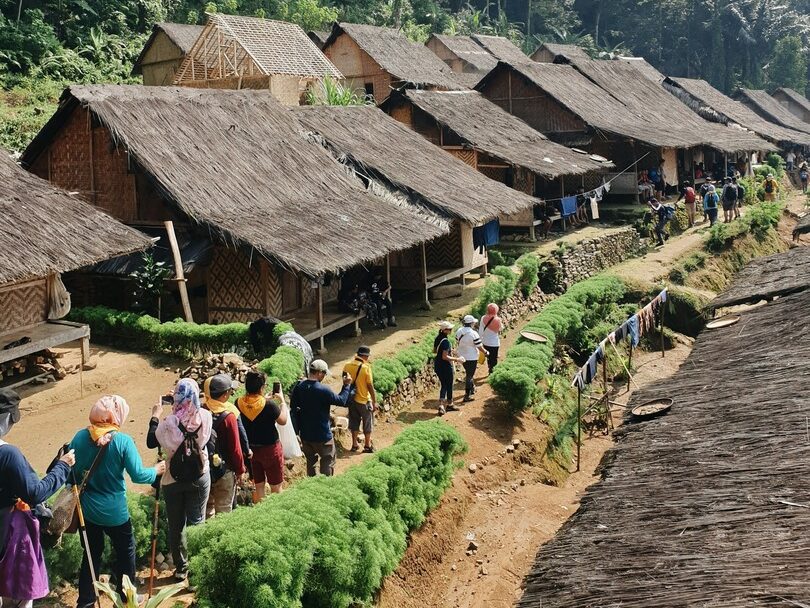
The Baduy Tribe is a traditional Sundanese community that has chosen to live apart from the modern world. Nestled in the village of Kanekes in West Java, about 4-5 hours from Jakarta, the Baduy people hold fast to their ancient customs, deliberately avoiding modern technology despite their proximity to the bustling city.
The Baduy have a profound respect for nature, viewing it as their provider. To honor this connection, they follow strict rules that protect the environment and discourage greed, ensuring their way of life remains in harmony with the land.
Life in the Baduy Community
The Baduy people live in small villages scattered across the hills and valleys near rivers. Over 50 villages make up their community, with most home to the Baduy Luar (Outer Baduy), while three are reserved for the Baduy Dalam (Inner Baduy).
Inner Baduy
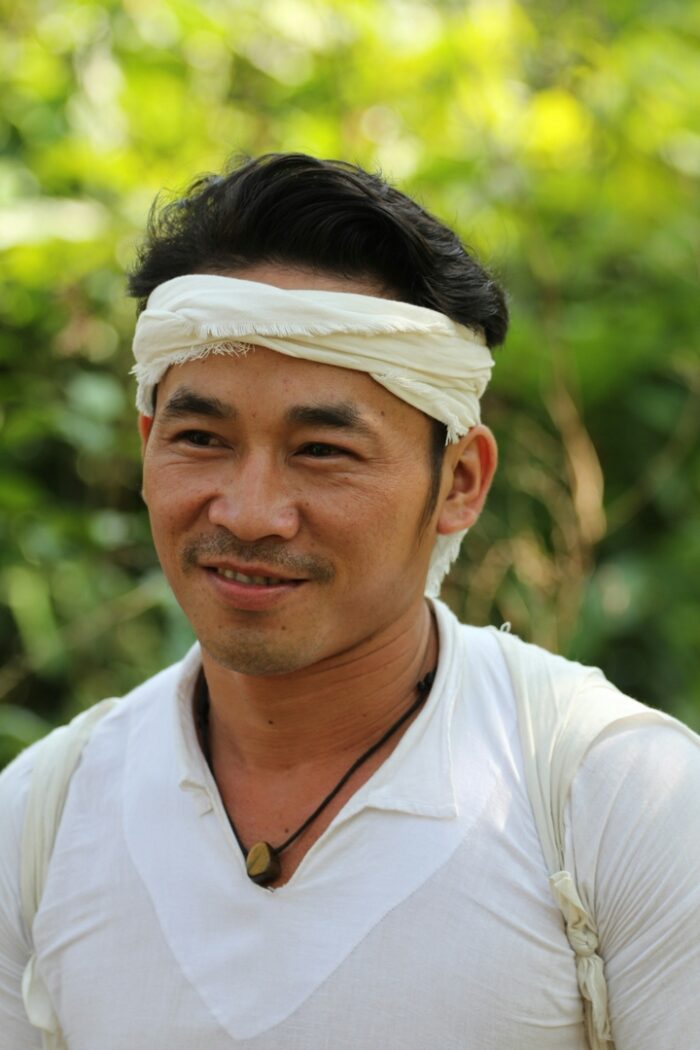
The Baduy Dalam, or Inner Baduy, live in three secluded villages deep within the forests—Cibeo, Cikeusik, and Cikertawarna. This inner group is dedicated to preserving their ancient traditions, choosing a life strictly separate from modern influences. They uphold a unique way of life, avoiding all forms of modern technology, including vehicles and footwear..
Clothing is an important symbol of their identity. The Baduy Dalam dress only in black and white, wearing white headscarves that signify their commitment to tradition. Their homes are built following ancestral rules, using bamboo and palm-leaf roofs, and must face south to respect their customs.
For sustenance, they practice traditional farming and store part of their harvest in a communal granary known as the Leuit, which is used only for special occasions like weddings. This shared stockpile can sustain the entire community for years, while daily meals come from personal harvests. By living according to these ancient customs, the Baduy Dalam maintain a lifestyle in complete harmony with nature, embodying simplicity and self-reliance.
Important note: While the Baduy Dalam allows visitors under strict guidelines, foreigners are not permitted to enter and are respectfully asked to honor this boundary. You can only go as far as Gajeboh village, the border between Outer and Inner Baduy.
Outer Baduy
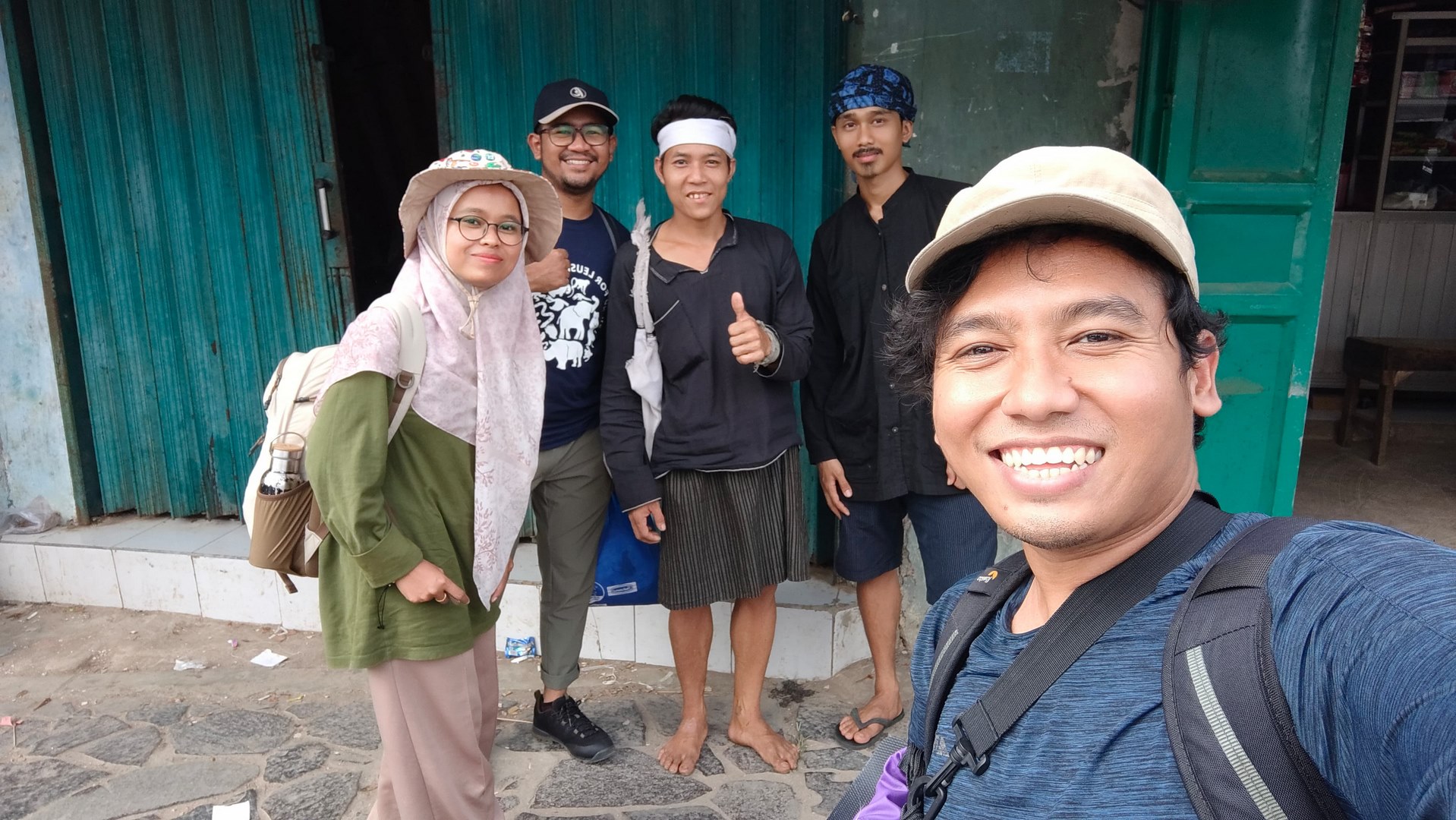
The Baduy Luar, or Outer Baduy, live in villages closer to the main entrance at Ciboleger Terminal, in areas like Marengo, Cikadu, Kaduketuk, Kadukolot, and Gajeboh. These villages, spaced about 5 km apart, are always located near rivers, which the community relies on for bathing and washing. While they also preserve Baduy customs, they are somewhat more open to modern influences. This group can wear shoes, use vehicles for transportation, and dress in black clothing with blue-black headscarves, along with occasional modern-style clothing.
Although more flexible, the Baduy Luar still adhere to traditional rules in building and farming. Their bamboo houses with palm-leaf roofs are oriented south, respecting ancestral customs. They also keep a communal granary, the Leuit, where a portion of the harvest is reserved for special occasions, while daily meals come from personal harvests.
The Baduy Luar occasionally travel to nearby cities such as Banten, Jakarta, or Bogor to sell products like honey, palm sugar, fruits, and other crops, though they respect a boundary and do not leave Java. By striking this balance between tradition and practicality, the Baduy Luar help connect the Baduy community with the outside world, offering a glimpse into their culture while remaining true to their roots.
Besides Jakarta, the closest city to Baduy is Bogor. Bogor also has many interesting places to visit. If you want to learn more about Bogor, check out our Guide to The Rain City: Bogor.
Why the Baduy Tribe Rejects Modernization?
The Baduy Tribe resists modernization to protect their land and community from outside influences that could harm their way of life and natural environment. They consider their land sacred, referring to it as ‘Taneuh Titipan‘ (entrusted land), a divine gift they are responsible for preserving. According to their beliefs, people have a duty to keep the land unspoiled—mountains must not be destroyed, forests must be preserved, rivers must remain undisturbed, and valleys must be kept intact. This belief keeps them closely connected to nature in their daily lives.
The Baduy also follow the ‘Sunda Wiwitan’ faith, which involves ancestor worship (animism) influenced over time by Islam, Buddhism, and Hinduism. However, Buddhist and Hindu teachings are more prominent in their practices. Each year, they hold a sacred ritual at Arca Domas during the month of ‘Kalima’. They also believe in a supreme God who created the universe.
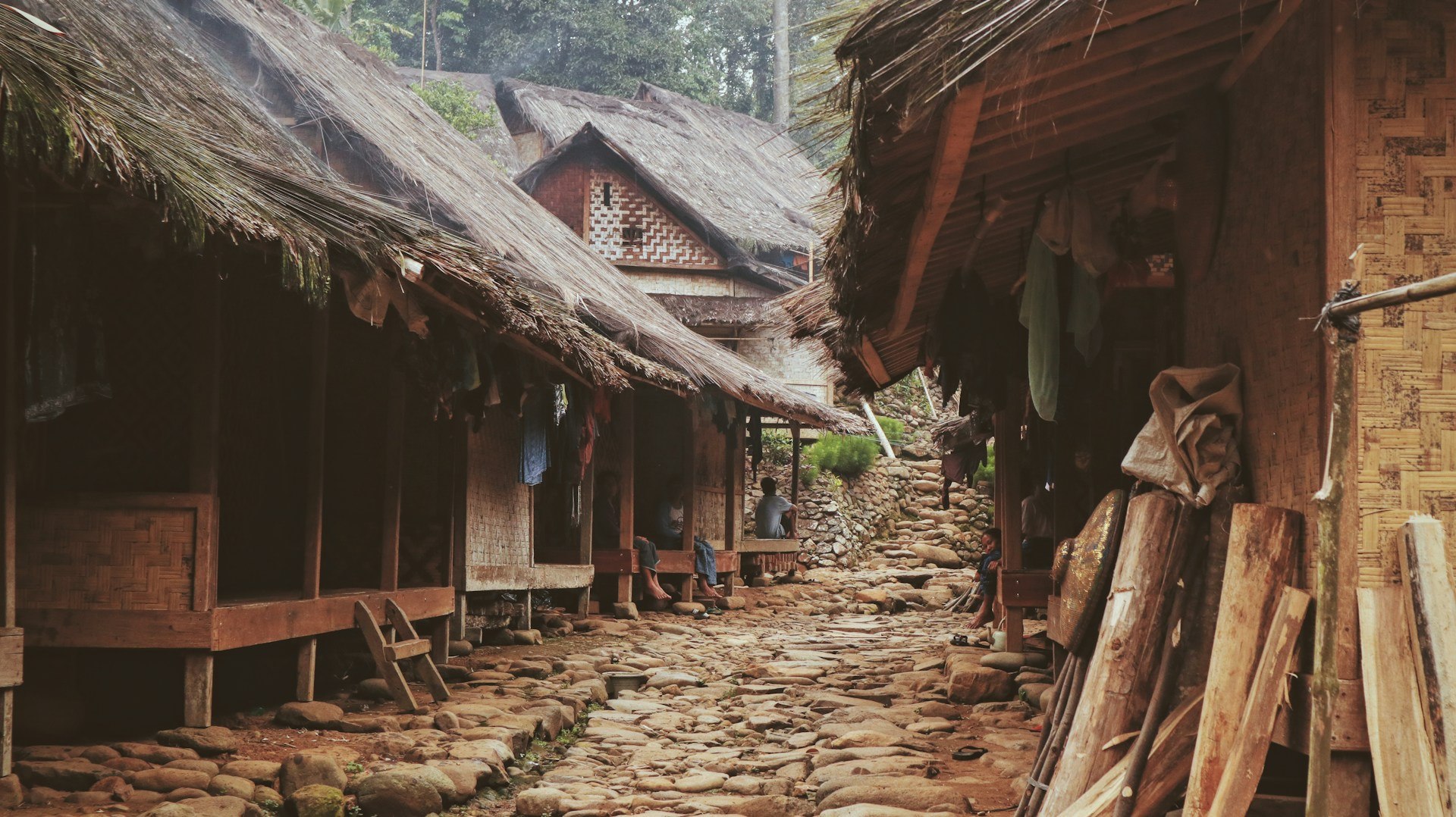
The Baduy people deeply respect their leader, the ‘Puun’, who governs every aspect of their lives, from farming rules to what is allowed or forbidden. The Baduy follow the Puun’s decisions without question, as they believe this structure ensures harmony within the community.
To avoid external influences, formal schooling is prohibited among the Baduy. However, some have begun to learn basic reading and arithmetic, often taught by tourists. The Outer Baduy have adopted limited technology, such as eco-friendly solar panels, to generate electricity, and some have started using mobile phones, though the internet remains a contentious issue. Many in the community worry that internet access could introduce unwanted influences and exposure to foreign cultures.
Culture and Traditions
The Baduy people remain deeply committed to the customs passed down from their ancestors, maintaining traditional practices in all aspects of life, including their homes, clothing, work, entertainment, and weaving.
Baduy women often weave cloth using simple, self-made tools. When not assisting their husbands with other tasks, they can frequently be seen weaving in front of their homes. Their woven items, such as headbands, sarongs, and other textiles, are sold as souvenirs, providing visitors with a piece of Baduy craftsmanship.
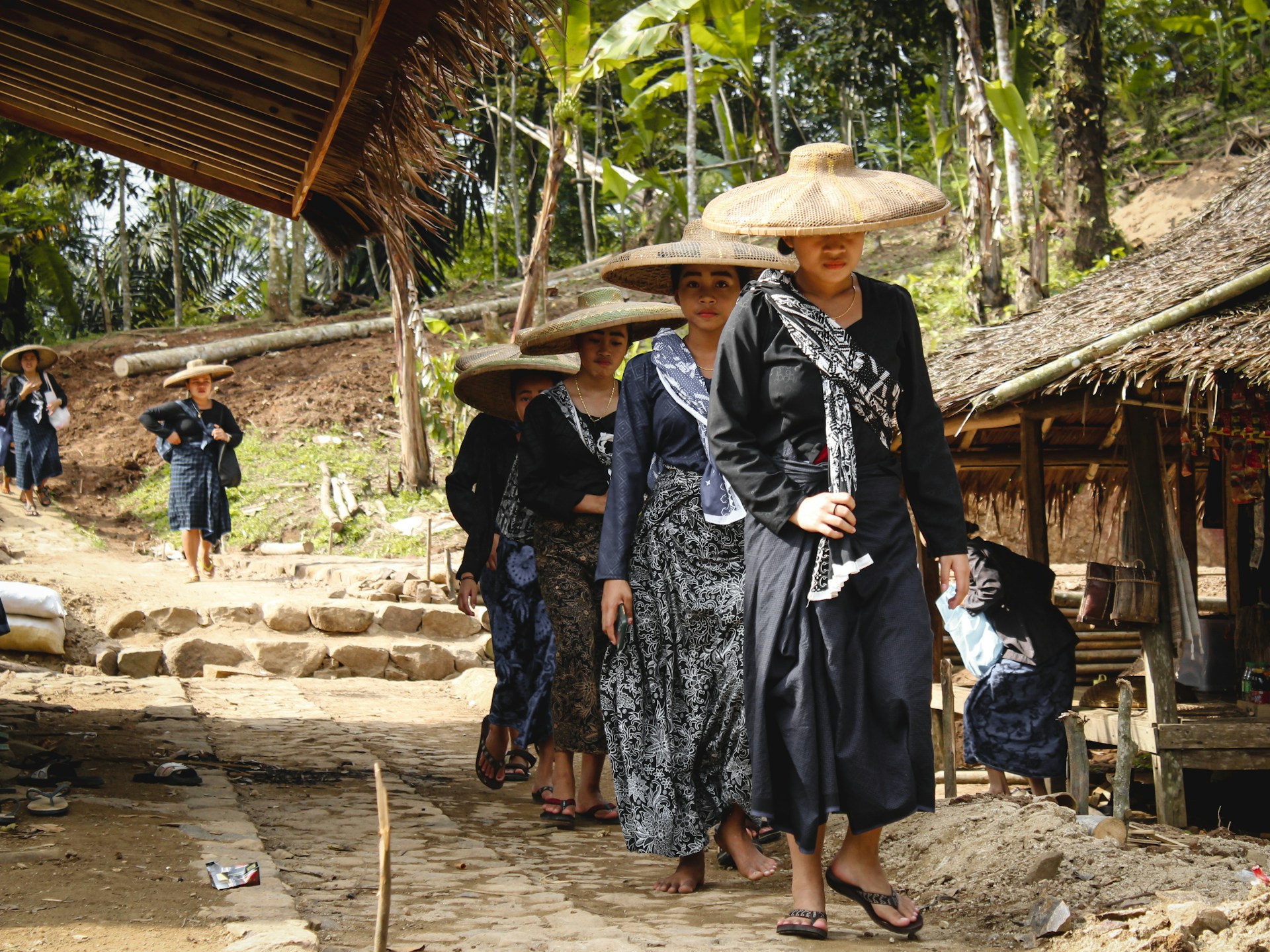
For the men, farming is a primary activity, but they also collect sap from palm trees to produce palm sugar, prized for its natural sweetness and lack of chemicals. In addition to collecting sap, the men venture into the forest to gather honey and various fruits, including durian, which is plentiful in the area.
Every year, the Baduy hold a festival called ‘Seba.’ This festival takes place in the middle of the year to give thanks for the harvest and to build good relations with the local government. They gather at the town square of Lebak and Serang, bringing their harvests. At the festival, you can enjoy traditional Baduy dances and listen to music played on the ‘Karinding,’ a unique Baduy instrument.
We also cover the etiquette rules in Indonesia in our Know the Manners in Indonesia: Do’s and Don’ts Guide for Travelers.
How to Get to Baduy
The Baduy people live in a village called Kanekes, in Leuwidamar District, Lebak Regency, Banten Province. Situated approximately 160 km from Jakarta, reaching Kanekes takes about 4-5 hours by car.
To reach Kanekes Village, you can take public transportation or join an open trip for more convenience.
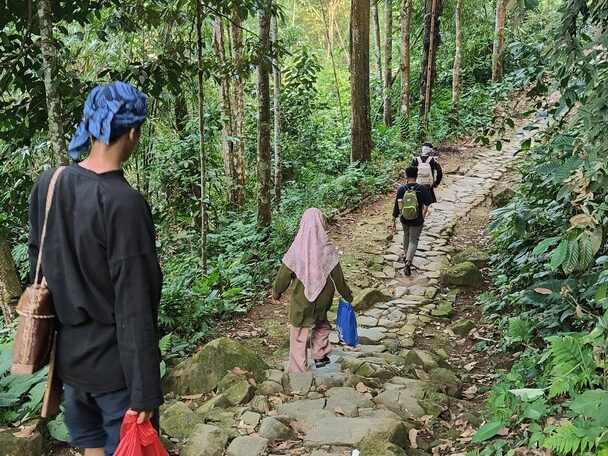
If you don’t speak Indonesian, I highly recommend an organized tour. Not only will you need to switch transportation multiple times, but the journey is long and can take up a lot of your time. But if you’re feeling adventurous, go for it! Here’s a guide on how to reach Baduy without a tour.
Getting to Baduy on Your Own
If you plan to use public transport, start by taking the KRL (Commuter Line) from Tanah Abang Station to Rangkasbitung Station. The ticket costs IDR 10,000 (USD 0.64), and the journey takes about 3 hours. The train from Tanah Abang to Rangkasbitung starts at 5:50 AM and runs every 30 minutes. Once you arrive at Rangkasbitung Station, exit to the left to reach Rangkas Terminal. From there, take a red angkot (public minibus) to Awe Terminal for IDR 5,000 (USD 0.32).
At Awe Terminal, take a green army-colored shuttle (angkot) to Ciboleger Terminal, costing around IDR 30,000 (USD 1.9). You may have to wait a bit for the angkot to depart. The journey from Awe Terminal to Ciboleger Terminal takes about 1.5 hours, but note that this shuttle service only runs until 1 PM.
After that, it’s time to begin your hike to the villages. If it’s your first time visiting the Baduy, it’s highly recommended to hire a local guide near Ciboleger. They’ll help lead you to the traditional Baduy villages and ensure you don’t miss any key sights. If you plan to go deeper into the village, you’ll encounter long footpaths and forest trails.
Before traveling using public transportation, learn about the public transport options in Jakarta to make your journey easier.
Visiting Baduy with a Guide
Most trips are organized from Jakarta and typically last one or two days. For more details and available options, it’s a good idea to check platforms like Klook, Traveloka, or GetYourGuide, where you can also read reviews from other travelers.
Do’s and Don’ts in Baduy
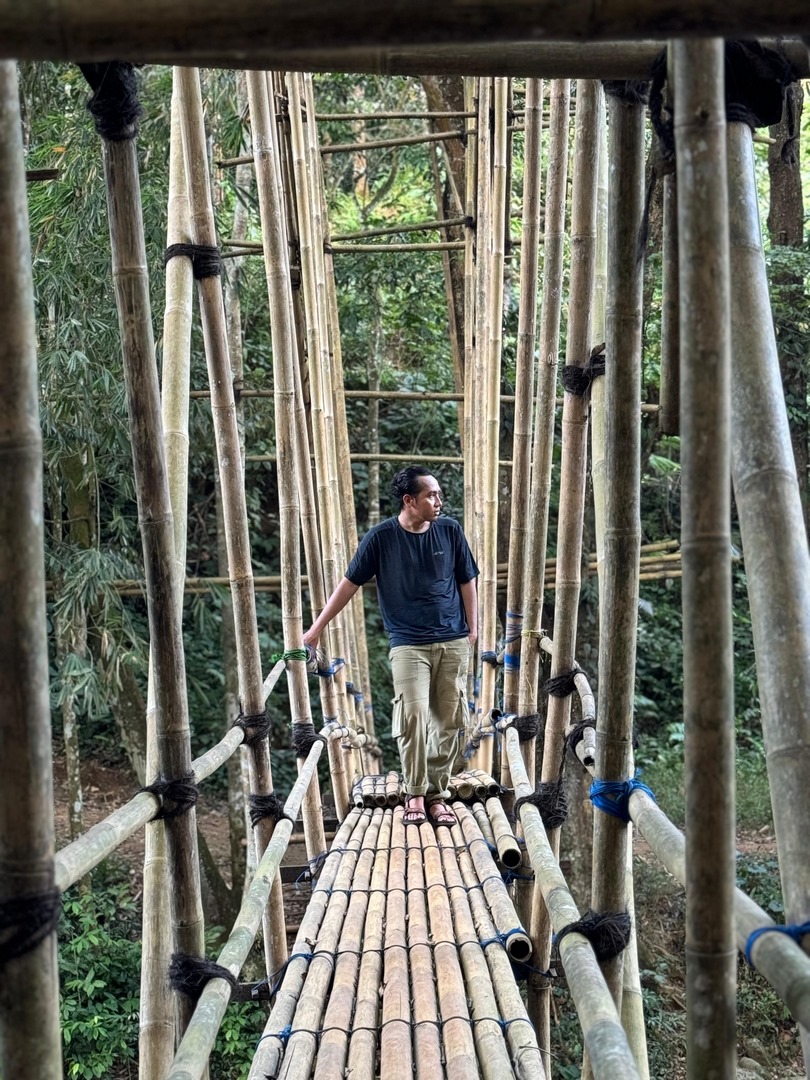
Before visiting the Baduy, it’s important to understand and respect their rules. Here’s a quick guide on what to do—and avoid—while you’re there.
Upon arrival, the first step is to ask for permission to enter the Baduy area. Once you have permission, keep these guidelines in mind:
Do’s:
- You can bring food or supplies from outside.
- You can bring a flashlight or other lighting.
- You can take photos or record videos in the Outer Baduy area.
- You can stay for more than one night, but you need to move to a different village each night.
- You can wear footwear.
- You can bring extra cash, as the Baduy now accepts money for transactions.
Don’ts:
- No bringing cigarettes, alcohol, or drugs.
- No bringing radios, tapes, speakers, or guitars.
- No bringing soap, shampoo, or toothpaste, especially in Inner Baduy.
- No littering.
- No cutting or pulling out plants.
- No entering protected or forbidden forests.
- No using rude language or swearing.
- Foreign tourists are not allowed in the Inner Baduy area.
These rules apply to all visitors to Baduy Village, and following them shows respect for the Baduy way of life. While the community warmly welcomes guests, it’s essential to remain polite and respectful at all times. Dress modestly to honor local customs and demonstrate consideration for the community.
Summary
The Baduy Tribe, residing in Kanekes Village in Banten, maintains a traditional lifestyle, deliberately avoiding modernization to protect their culture and natural environment. Guided by their leader, the Puun, they uphold customs that keep them closely connected to nature. The tribe is divided into two groups: the Outer Baduy, who are somewhat open to modern influences, and the Inner Baduy, who strictly adhere to ancestral traditions.
Visitors can reach the Baduy by public transport or organized trips, with hiring a local guide highly recommended. Clear rules are in place for visitors: bringing food and taking photos is permitted, but items like alcohol, cigarettes, soap are prohibited.
Special thanks to Priambodo Yusuf from Expedisi Indonesia Baru, a motorbike expedition across Indonesia with a mission to document society and nature from various perspectives, who shared some of his photos with us.
